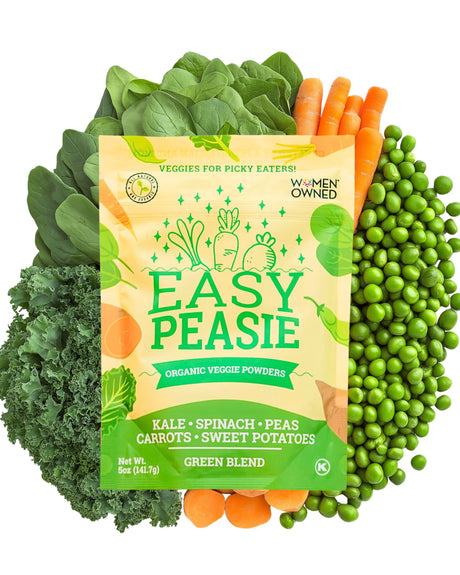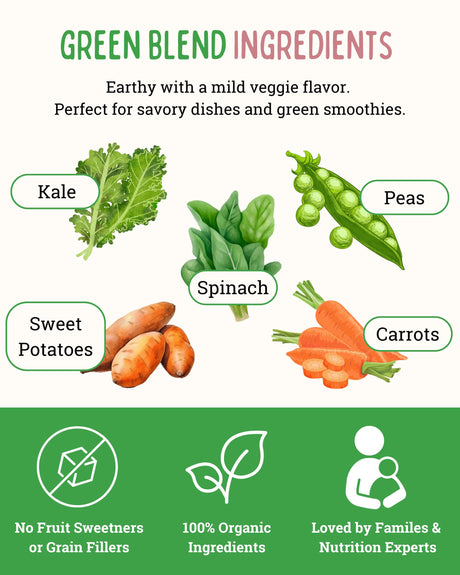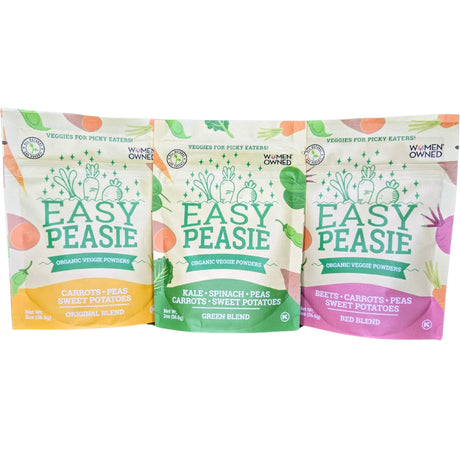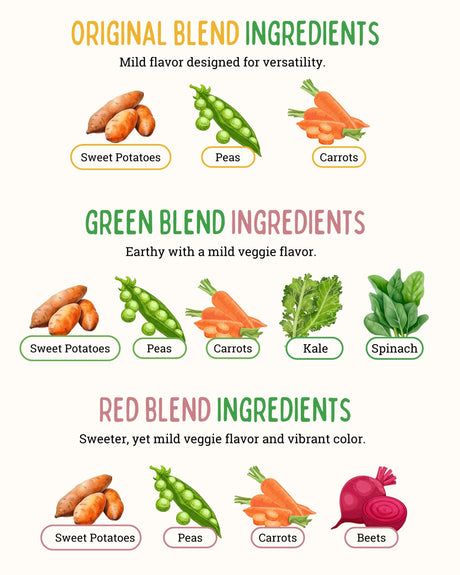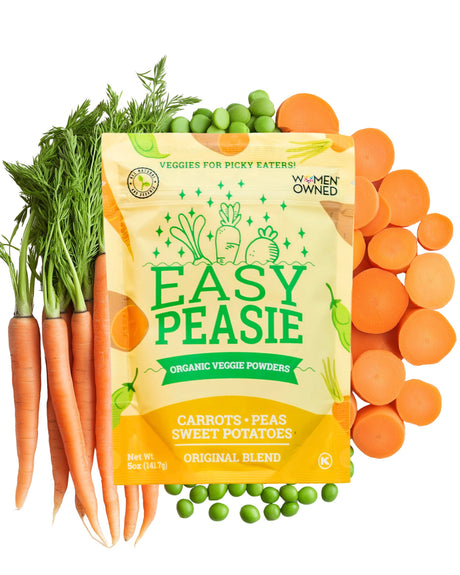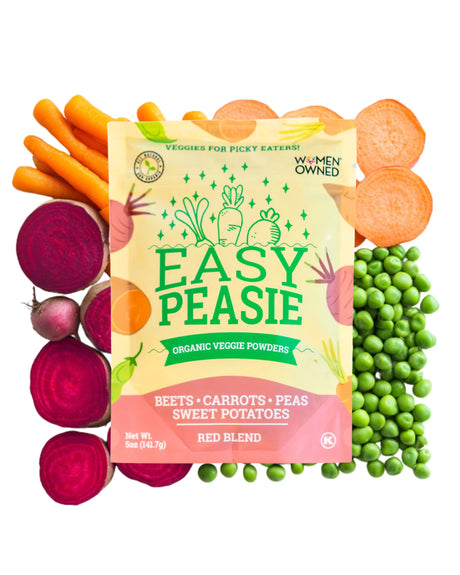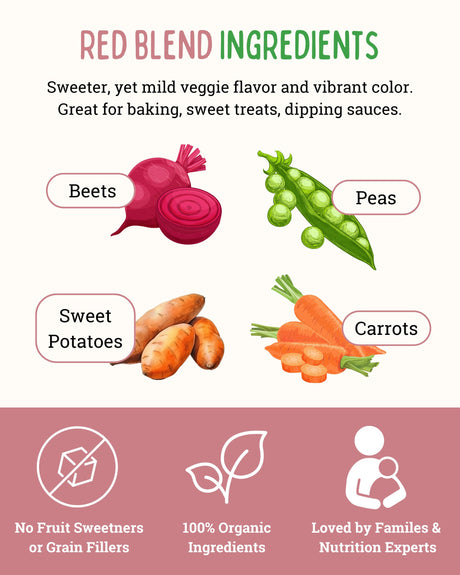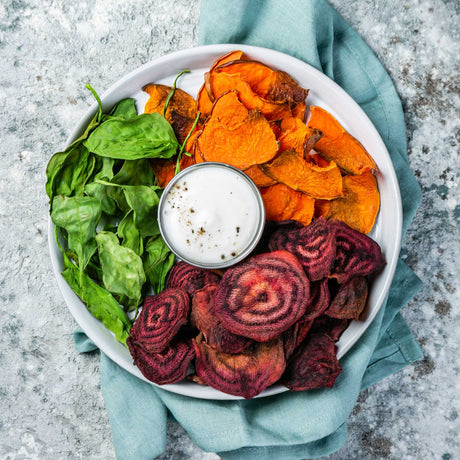Balancing Festive Treats with Healthy Choices
The Holiday Eating Dilemma for Picky Eaters
The holiday season, with its festive cheer and abundance of treats, presents a unique challenge for parents of picky eaters. Striking a balance between allowing children to enjoy holiday treats and ensuring they eat healthily can be a delicate dance.
Many traditional holiday goodies are often high in sugar and low in nutritional value, posing a dilemma for health-conscious parents. This is particularly challenging for those dealing with picky eaters who may gravitate towards sugary snacks while shunning healthier options.
A Guide to Nutritious and Appealing Holiday Treats
In this blog, we’ll explore a variety of alternative holiday treat ideas that are not only nutritious but also appealing to the selective palate of children. Our focus will be on creative, festive snacks that capture the joy of the season while packing a healthy punch.
From reinventing classic holiday recipes with a nutritious twist to introducing fun, visually appealing snacks that entice picky eaters, we’ll provide practical ideas that parents can easily implement. These treats aim to delight children and give parents peace of mind, knowing they’re contributing to their child’s health even during the indulgent holiday season.

Understanding Picky Eaters
Unraveling the Mystery of Selective Eating
Picky eating in children is a common phenomenon that can stem from a variety of reasons. It often begins in the toddler years when children start to assert their independence, including making choices about what they eat.
Sensory sensitivities can also play a role; certain textures, colors, or flavors might be unappealing to some children. Additionally, children’s taste buds are more sensitive than adults', making them more reactive to strong or unfamiliar flavors.
For some kids, picky eating might simply be a phase, while for others, it can be a more enduring trait. Understanding the root of your child's selective eating can help in addressing it more effectively.
The Power of Patience in Introducing New Foods
Introducing new foods to picky eaters requires patience and a gentle approach. Forcing or pressuring children to eat certain foods can often backfire, leading to more resistance. Instead, offering new foods alongside familiar favorites can make them seem less intimidating.
Consistent exposure is key – it can take multiple attempts before a child is willing to try a new food. When they do try something new, even if it's just a small bite, it’s important to acknowledge and praise this step.
Involving children in food preparation can also pique their interest and make them more likely to try the food. Remember, every child is different, and finding the right approach may take time and experimentation.
The Downside of Traditional Holiday Treats
Navigating the Sugary Waters of Holiday Goodies
Traditional holiday treats, while delicious and nostalgic, often contain ingredients that may not align with the healthiest choices for children. These goodies are typically rich in sugars, refined flours, and saturated fats.
From frosted cookies to candy canes and rich puddings, the common thread is a high sugar content, which can contribute to dental issues and unhealthy weight gain. The use of artificial colors and flavors in many store-bought treats is also a concern, as these additives may have adverse effects on children's health.
Understanding Sugar's Role in Health and Behavior
The impact of sugar and processed foods on children's health and behavior is a growing concern. High sugar consumption can lead to energy spikes and crashes, affecting children’s mood and activity levels.
Over time, a diet high in sugar can increase the risk of developing chronic health issues like obesity and type 2 diabetes. Moreover, studies have suggested a link between excessive sugar intake and behavioral issues, such as hyperactivity and difficulty concentrating, in some children.
The holiday season, with its abundance of sugary treats, can exacerbate these issues, making it crucial for parents to find a balance and offer healthier alternatives.
Fun and Healthy Treat Alternatives

Reimagining Holiday Treats with a Healthy Twist
Transforming traditional holiday treats into healthier alternatives can be both fun and rewarding. With a focus on incorporating nutritious ingredients, you can create treats that are visually appealing and delicious, making them more enticing for children.
For example, fruit Santas made with strawberries and whipped cream or Greek yogurt can be a delightful and healthy alternative to sugar-laden candies. They are not only festive but also pack a punch of vitamins and antioxidants.
Vegetable Snowmen and Wholesome Cookies
Another creative idea is constructing vegetable snowmen using sliced cucumbers, carrots, and cherry tomatoes, held together with toothpicks and adorned with raisin eyes and a red pepper scarf. These adorable, nutrient-rich snowmen can be a fun way to encourage children to enjoy their veggies.
For a sweet treat, consider baking whole-grain gingerbread cookies. By substituting whole-grain flour for white flour and reducing the sugar content, these cookies can be a healthier version of the holiday classic.
You can also add pureed fruits like applesauce or pumpkin to enhance the nutritional value and keep the cookies moist and flavorful.
The Art of Healthy Holiday Snacking
These healthy treat alternatives don't just offer better nutrition; they also provide an opportunity for children to explore new flavors and textures. The key is to keep the treats fun, colorful, and interactive, aligning with the festive spirit of the season.
By being creative with ingredients and presentation, you can make healthy eating exciting and enjoyable for children, even during a time of year traditionally filled with indulgent foods.
Incorporating Nutritious Ingredients
Revamping Recipes with Healthy Substitutes
Transforming traditional holiday recipes into healthier versions doesn't mean sacrificing flavor. It's all about smart substitutions and adding nutrient-rich ingredients. For instance, in baking, you can replace white flour with whole grain or almond flour for added fiber and nutrients.
Instead of using refined sugar, opt for natural sweeteners like honey, maple syrup, or ripe bananas, which provide sweetness along with beneficial nutrients.
These simple swaps can significantly boost the nutritional value of your holiday treats without compromising on taste.
Creative Additions for Enhanced Nutrition
Another strategy for making holiday recipes healthier is to incorporate fruits and vegetables wherever possible. Adding grated carrots, zucchini, or apples to cakes and muffins not only enhances their nutritional profile but also adds moisture and natural sweetness. EasyPeasie Veggie Blends are also a great addition to any recipe.
In savory dishes, try bulking up stuffing with quinoa or whole grain bread and adding chopped vegetables like bell peppers, onions, and celery. These additions increase the fiber and vitamin content, making traditional dishes more filling and nutritious.
For chocolate treats, consider adding pureed avocado or black beans – these may sound unconventional, but they add creaminess and nutrients while reducing the need for excess fats and sugars.
By experimenting with these nutritious ingredients and substitutions, you can create holiday dishes that are both delicious and good for you.
Getting Kids Involved in the Kitchen
Cooking Together: A Recipe for Picky Eater Success
Involving children in the kitchen, especially those who are picky eaters, can have numerous benefits. It’s an engaging way to introduce them to a variety of foods and can help demystify ingredients they might be hesitant to try.
Cooking together provides a hands-on experience and a sense of accomplishment, which can make children more willing to taste the dishes they’ve helped create. It’s also an excellent opportunity for bonding and learning essential life skills.
For picky eaters, being part of the cooking process can lessen the intimidation of new foods and encourage them to explore different flavors and textures in a fun and relaxed setting.
Kid-Friendly Holiday Treat Recipes
There are plenty of holiday treat recipes that are perfect for getting children involved in the kitchen. One idea is to make no-bake fruit and nut balls, which are simple and safe for children to help with.
Kids can mix ingredients, roll the mixture into balls, and then roll them in coconut flakes or cocoa powder. Another fun activity is decorating whole-grain sugar cookies with natural toppings like fruit purees and nuts.
Children can use cookie cutters to create festive shapes and then decorate them with healthy toppings. Preparing fruit skewers in the shape of a Christmas tree or a snowman can also be a delightful activity.
Let children thread pieces of fruit onto skewers and then arrange them to create festive shapes. These activities are not only fun but also introduce children to healthier alternatives to traditional holiday treats.

Presentation and Serving Ideas
Making Healthy Treats Irresistible
The way holiday treats are presented can significantly influence their appeal, especially to picky eaters. Creative and fun presentation can turn healthy options into enticing treats.
For instance, arranging fruit slices or veggie sticks in the shape of a Christmas tree or a wreath on a platter can make them more visually appealing. Using cookie cutters to create fun shapes out of whole-grain pancakes or sandwiches can also attract children’s interest.
Bright and colorful foods naturally draw attention, so incorporating a variety of colors through fruits and vegetables can make the dishes more appealing.
Festive Touches for Holiday Snacking
Festive plates, DIY decorations, and interactive treat stations can elevate the holiday snacking experience. Serving treats on plates with holiday themes or in special holiday serveware can make the eating experience more exciting for children.
Creating DIY decorations for the table, such as handmade place cards or centerpieces, can also add a personal and festive touch. Setting up interactive treat stations where children can choose their toppings or assemble their snacks, like a yogurt parfait or a whole-grain gingerbread decorating station, encourages them to engage with their food and makes healthy eating more enjoyable.
The Art of Enticing Food Presentation
Remember, the goal is to make healthy eating during the holidays not just nutritious but also fun and festive. Simple touches like using holiday-themed picks for fruit, arranging food in creative patterns, or even just setting the table with bright and cheerful tableware can transform the meal experience.
These small details can make a big difference in how children perceive and enjoy their food, turning mealtime into a delightful part of the holiday festivities.
Balancing Treats with Healthy Eating Habits

Finding the Middle Ground in Holiday Eating
The holiday season often poses a challenge when it comes to maintaining healthy eating habits, especially for children. Balancing the occasional indulgence with overall nutritious choices is key. One effective strategy is to follow the concept of moderation.
Allowing children to enjoy holiday treats in small amounts can prevent them from feeling deprived, while still maintaining a focus on healthy eating. It’s also helpful to ensure that treats are not the main focus but rather a small part of the broader holiday festivities, which include nutritious meals.
Leading by Example: Healthy Eating Role Models
Parents play a crucial role in setting the tone for healthy eating. Modeling balanced eating behaviors yourself is one of the most powerful ways to influence your children’s eating habits. This includes showing enthusiasm for healthy foods, being open to trying new and nutritious options, and demonstrating sensible portion control with treats.
Involving children in meal planning and preparation can also encourage them to make healthier choices. Discussing the benefits of different foods in a simple, child-friendly manner can help them understand the value of nutrition and its impact on their health and well-being.
Setting Sensible Limits on Sweets
While it’s okay to relax some dietary rules during the holidays, setting reasonable limits on sweets and treats is important. This might mean having specific treat days or limiting sweets to certain times of the day.
Offering healthy alternatives alongside traditional treats can also help. For instance, having a fruit platter or veggie sticks available during dessert time provides a nutritious option. Encouraging children to listen to their bodies and understand the feeling of fullness can also help in managing treat consumption.
By setting these reasonable limits and encouraging mindful eating, parents can help children enjoy holiday treats while still prioritizing their overall health and nutrition.
Addressing Dietary Restrictions and Allergies
Crafting Inclusive Treats for All
When preparing holiday treats, it’s important to consider guests with dietary restrictions or allergies. Creating inclusive treats ensures that everyone can enjoy the festive fare without concern.
For those requiring gluten-free options, alternative flours like almond, coconut, or oat flour can be used in baking. These flours not only cater to gluten sensitivities but also add unique flavors and textures to traditional recipes.
For dairy-free needs, plant-based milks and butters are excellent substitutes that work well in most recipes without compromising taste.
Navigating Allergies with Care and Creativity
If you’re hosting a holiday gathering with individuals who have food allergies, it’s crucial to understand their specific needs. Substituting nuts with seeds like pumpkin or sunflower in recipes can be a safe alternative for those with nut allergies.
Similarly, for egg allergies, applesauce or mashed bananas can serve as effective binding agents in baked goods. Always be sure to read labels carefully when purchasing ingredients, as allergens can be present in unexpected places.
Additionally, communicating with guests about their dietary restrictions ahead of time allows for thoughtful preparation and ensures a safe, enjoyable dining experience for everyone.
Embracing Variety in Holiday Offerings
Offering a variety of treats that cater to different dietary needs not only makes your holiday table more inclusive but also introduces guests to new and interesting flavors. Experimenting with recipes that naturally fit into these dietary categories, such as fruit-based desserts for a naturally gluten-free and dairy-free option, can be both fun and rewarding.
The key is to approach these dietary challenges with a sense of creativity and exploration, turning the need for adaptation into an opportunity to expand your culinary repertoire.
Embracing Healthier Celebrations
Reflecting on the Journey to Healthier Holiday Treats
As we wrap up our exploration of healthier alternatives to traditional holiday treats, it's clear that making nutritious choices doesn't mean sacrificing the joy and spirit of the season. For parents of picky eaters, this journey is especially significant.
By offering creative, healthy options, we can ensure that our children enjoy the festive treats while also nourishing their bodies. The importance of these alternatives lies not just in their nutritional value but also in the message they convey about making mindful food choices.
A Call to Festive and Healthy Innovation
Parents are encouraged to view the festive season as an opportunity to introduce their children to a world of flavors and textures through healthier treat options. Experimenting with ingredients, getting children involved in the kitchen, and being mindful of dietary needs are ways to make this holiday season both healthful and delightful.
Exploring these alternatives can be a fun and enriching experience, leading to new family traditions that prioritize health without compromising on taste and enjoyment.
Celebrating with Health and Happiness
In conclusion, the holiday season is a time for joy, celebration, and togetherness. By incorporating healthier treats into our festivities, we not only cater to the diverse needs and preferences of our loved ones but also instill in our children the value of eating well.
These nutritious and delicious treats add to the richness of our holiday experiences, allowing us to celebrate with both health and happiness. Let this festive season be a reminder of the joy that comes from nourishing our bodies and our spirits with foods that are as good for us as they are delightful.
Leave your comments below; we love to hear from you! And don't forget to follow EasyPeasie for more veggie info and convo on YouTube, Facebook, and Instagram! ~ThePeas


